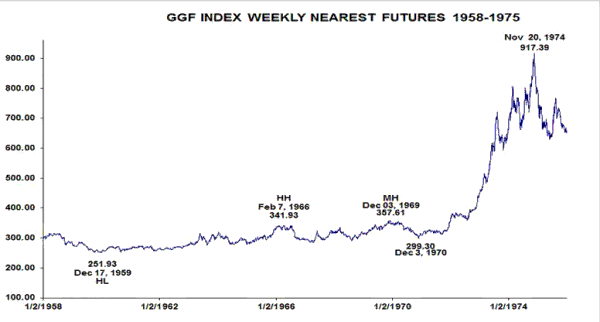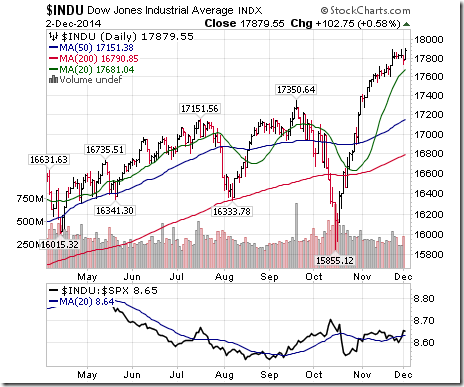Consensus Special Report How to Trade The Dow Jones Industrial Average
Post on: 19 Июль, 2015 No Comment

This article is brought to you by:
How to Trade
The Dow Jones Industrial Average
The Dow Jones Industrial Average (DJIA) was first published in 1896 to help investors identify broad stock market trends, it has since become known as the “Dow”–the most widely quoted and followed benchmark for the U.S. stock market. The DJIA tracks the average price of 30 large NYSE stocks drawn from a cross section of sectors of the U.S. economy. The stocks in the DJIA are all household names and are heavily traded in the United States as well as in major foreign stock markets.
The DJIA portfolio consists of equal numbers of shares of each of the 30 stocks. The total market value of DJIA stocks was $2.125 trillion, as of June 1997. This represents approximately 25 percent of the market value of NYSE stocks and 20 percent of the market value of all U.S. stocks. Partly because of the vast value this basket of stocks represents, it is very difficult for individual investors to replicate exactly the performance of the Dow without owning shares in each of the 30 stocks that comprise the index–a potentially exorbitant expense.
The Chicago Board of Trade (CBOT) has now introduced both a futures and an options contract based on the Dow which will enable investors to trade the exact components of the DJIA.
Datastream
What Are DJIA Futures?
A CBOT DJIA futures contract, like all futures contracts, is an obligation to buy (a long position) or sell (a short position) a specific commodity–in this case, the basket of stocks represented by the DJIA index. A futures contract also specifies the date by which this transaction must occur, known as the settlement date, and how the transaction will be fulfilled, known as delivery. The level of the futures contract closely tracks the level of the DJIA index, but may be higher or lower due to the impact of several factors to be discussed below.
Value Of The Contract
The value of the futures contract is determined by multiplying the index level of the futures contract by $10. For example, if the futures index price is 7800, the value of the contract is 7800 x $10 = $78,000. As a buyer or seller of the futures contract, you are essentially trading approximately $78,000 worth of stock.
Method Of Settlement
CBOT DJIA futures settle (or are delivered) in cash, not in the actual basket of stocks comprising the index. This means that on the settlement date of the contract the settlement price is $10 times the special opening quotation, a value derived from the opening prices of the component stocks of the index following the last day of trading in the futures contract. This value can be compared to the price paid for the contract when the trade was initiated. For example, if the DJIA is 7900 at expiration, a long who bought the contract at 7800 receives $1,000 ($10 x 100) from the short.
This $1000, however, is not paid in one lump sum upon expiration of the contract, it is paid in successive installments of `margin’ payments which begin on the date following the initial futures transaction and continue to the date of settlement (if the contract is held that long) or when the contract is offset by an opposite transaction. This is called marking to market. Daily margin payments are determined by the difference between the previous day’s settlement price of the futures contract when it is bought or sold and the contract settlement price determined at the close of trading each day. Margin in the futures markets is not the same as margin in the equities markets, where it provides a form of leverage on your investments. In the futures markets, such payments “mark to market” the value of the futures contract and can be viewed as a performance bond, reducing the risk of default by either party to the transaction.
For example, if the settlement price of June CBOT DJIA futures increases from 7800 to 7840 between June 17 and June 18, the short pays $400 ($10 x 40 = $400) and the long receives $400. If the futures settlement price decreases 10 points the following day, the long pays $100 to the short–and so on until settlement, when the futures price and the index price converge and become equal.
Remember, once any required margin has been paid, the short or long can close out a position by offsetting the contracts. This makes a futures contract equivalent to a sequence of daily contracts an investor can interrupt at any time before settlement. At the settlement date, positions that have not been offset are settled in cash at the final settlement price. Of course, the dollar amount of margin due will be determined by changes in the price of the futures contract and the number of contracts bought or sold.
Buying And Selling The Market
With Long And Short Futures Contracts
To buy or sell DJIA futures is to buy or sell the DJIA portfolio at some future date. There are two differences between buying the DJIA portfolio and buying the futures:
1. The price of the portfolio must either be paid fully in cash or financed at the prevailing short-term rate of interest in a stock margin account.
2. The owners of the stocks receive cash dividends.

As mentioned earlier, the price of the futures contract closely tracks the price of the index; however, these two differences do have an effect on the futures price. To make the futures contract a true substitute for the index, it is priced to account for both the short-term financing of the stocks and the dividends paid by component stocks until futures expiration. This adjustment is called the cost of carry, and the price of the DJIA plus the cost of carry determines a fair value (theoretical value) for the futures contract.
The process by which the fair value of the futures contract to the cash index price is maintained is called arbitrage. Arbitrage refers to the simultaneous purchase (sale) of a futures contract and sale (purchase) of the stocks in the underlying index. If the cost of buying the DJIA portfolio and financing the purchase is less than the futures price, arbitragers buy the DJIA portfolio and sell the futures. In doing so, they bring the index and futures prices back in line. Conversely, if the futures price is less than the cost of shorting the stocks, arbitragers short stocks and cover it with a long position in futures. As the expiration date of the futures contract approaches and financing costs decrease, the futures price converges with the price of the DJIA. As previously noted, at expiration the price of the DJIA futures is equal to the Dow.
A position in stock index futures is an efficient method of controlling a portfolio’s exposure to stock market risk. Each long or short DJIA futures contract effectively buys or sells 10 times the DJIA portfolio at the expiration date of the contract. For example, if you are anticipating a correction or downturn in the stock market, selling $200,000 worth of DJIA futures contracts effectively reduces your current investments in DJIA stocks by $200,000. If this is your forecast, why trade in the futures market when you can simply divest yourself of $200,000 worth of stocks? Recall that the futures price is equal to the value of the DJIA plus the cost of carry. One of the components of the cost of carry is a short-term or money market interest rate. By selling the futures contract, the $200,000 now earn the money market rate of return and you guarantee that the future value of your $200,000 investment in stocks will be today’s futures price (assuming your portfolio is very similar to the DJIA). Your investment in stocks is now riskless, and your rate of return on this riskless investment is the money market component of the cost of carry. Through the futures transaction, you have decreased your percentage of wealth invested in stocks and increased your percentage of wealth invested in a money market asset. Your underlying asset, the DJIA stocks, remains unchanged, saving you the time and commission expense of selling this substantial portfolio. If your expectations of market performance prove correct, you have shielded the portfolio from loss and gained a money market rate of return.
Of course, buying stock index futures has the reverse effect, meaning that you increase your exposure to equities and decrease your exposure to the money market. Even if you have no prior equity exposure, the same strategies serve to establish a long or short equity position so that you can take advantage of market moves. Certainly, the same asset allocations and reallocations can be realized by directly buying and selling (shorting) the stocks themselves. Yet it is more expedient and far less expensive to trade stock index futures, particularly if you expect the market upturn or downturn to be short-lived. This is the reason fund managers routinely use stock index futures to change the mix of assets in their portfolios.
In short, the parallel movement between the DJIA futures and the index itself makes the futures an ideal way for you to create a proxy of the U.S. market and to restructure and manage the risk of DJIA portfolios, or more generally, portfolios of U.S. stocks. There is no initial investment (other than the initial margin you must post) and little default risk. With a single transaction, you can instantly move in and out of the market at any time and at lower transaction costs than if you had to buy or sell a whole basket of stocks.
Extract from `Advanced Strategies for Individual Investors’ published by the Chicago Board of Trade.
David Cocker
October 20, 1997 Berkeley Futures, Ltd.
38 Dover Street, London, UK, W1X 3RB
Added to the WWW 11-14-97
Last updated on 11-14-97














